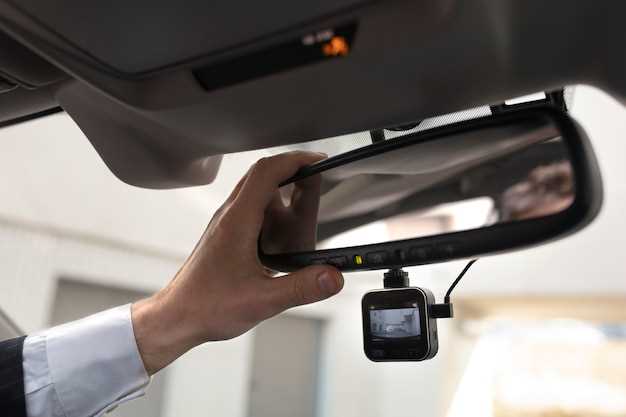

The thrill of driving a Mustang is often accompanied by a sense of freedom and control on the open road. However, as any seasoned driver knows, this exhilarating experience can come with its own set of challenges, particularly when it comes to visibility. One of the most critical aspects to consider is the blind spot–those areas around the vehicle that are not easily visible to the driver. With traffic becoming increasingly congested, the importance of being aware of these hidden zones cannot be overstated.
Blind spot monitoring systems are designed to enhance safety by alerting the driver to vehicles lurking in these blind spots. As Mustangs continue to evolve technologically, the integration of such systems raises the question: Is investing in blind spot monitoring a wise choice for Mustang owners? While some might view it as a mere luxury, others recognize it as a practical feature that promotes safer driving practices.
By examining factors such as accident statistics, the convenience of added safety features, and the overall driving experience, one can better assess whether a blind spot monitoring system is a valuable investment. Given the Mustang’s performance-oriented design, the combination of power and safety technology could prove to be a compelling argument for drivers looking to maximize their vehicle’s capabilities while minimizing risk.
Cost-Benefit Analysis of Blind Spot Monitoring Features
The integration of blind spot monitoring features in cars, such as Mustangs, presents both potential advantages and costs that merit careful consideration. On one hand, the blind spot assist system actively enhances driver awareness by providing alerts when a vehicle enters a blind spot, significantly reducing the likelihood of accidents during lane changes.
From a cost perspective, many manufacturers include this feature as part of optional packages, which can increase the vehicle’s price. However, the investment may be justified when considering the potential costs associated with accidents. The average cost of a car accident can exceed several thousand dollars, which far outweighs the initial investment in blind spot monitoring technology.
Moreover, the emotional toll and inconvenience associated with accidents cannot be quantified in monetary terms but is an important factor for many drivers. The peace of mind that comes from knowing a system is in place to assist with spotting vehicles in blind spots can enhance the overall driving experience.
Additionally, the resale value of vehicles equipped with advanced safety features like blind spot monitoring may be higher. Many buyers prioritize safety features, making such investments potentially recoupable during resale.
In conclusion, weighing the costs against the benefits clearly illustrates that while there is an upfront expense for blind spot monitoring features, the long-term savings and enhanced safety make it a prudent investment for Mustang owners who prioritize both safety and driving enjoyment.
Real-World Performance: User Experiences and Feedback

Many Mustang owners have found the blind spot monitoring feature to be a valuable assist in daily driving scenarios. Feedback from users highlights how the system effectively minimizes the risk of collisions when changing lanes. Drivers appreciate the subtle visual alerts that illuminate in the side mirrors, providing a clear indication of vehicles in the blind spots. This functionality enhances situational awareness, allowing for safer maneuvering on busy highways.
Owner testimonials emphasize the effectiveness of the blind spot monitoring system during various driving conditions. In heavy traffic, where the potential for overlooked vehicles is high, users report feeling more confident and secure. The ability to receive timely alerts about approaching cars from behind has proven crucial, especially for those who frequently make lane changes.
However, some drivers have had mixed experiences with the sensitivity of the system. A few have noted instances where the spot detection alerts were triggered by vehicles at a distance, leading to confusion. Nevertheless, most agree that the benefits far outweigh these occasional quirks, as they provide a significant layer of safety that assists in preventing accidents.
Overall, the general consensus among Mustang enthusiasts is that investing in blind spot monitoring is worthwhile. The feature not only enhances safety but also adds to the overall driving experience, turning routine drives into more secure and enjoyable journeys.
Comparison with Other Driver Assistance Technologies

Blind Spot Monitoring (BSM) is a valuable addition to the array of driver assistance technologies available in modern vehicles, including Mustangs. To assess its investment value, it is essential to compare BSM with other prominent driver assistance systems.
Adaptive Cruise Control (ACC) is one such technology that assists drivers by automatically adjusting vehicle speed to maintain a safe distance from the vehicle ahead. While ACC enhances driving convenience during highway travel, it does not specifically address blind spot concerns. BSM, on the other hand, focuses on monitoring areas around the vehicle that are not visible through standard mirrors, providing alerts to drivers about potential hazards during lane changes.
Another common system is Lane Departure Warning (LDW), which alerts drivers when they unintentionally drift out of their lane. Although LDW helps maintain lane discipline, it does not cover the blind spots on either side of the car. BSM complements LDW by adding an extra layer of safety, specifically targeting the areas where traditional driver awareness may fall short.
Forward Collision Warning (FCW) and Automatic Emergency Braking (AEB) systems are designed to prevent frontal collisions. While these technologies are critical in avoiding crashes, they focus primarily on front-end monitoring rather than side or blind spot awareness. BSM plays a crucial role here, helping drivers to be aware of vehicles that approach from behind and beside, thereby reducing the risk of side collisions.
The integration of BSM with other assistance technologies can enhance overall safety. For example, BSM can function in tandem with rearview cameras and parking sensors, delivering a comprehensive safety package that covers multiple angles of potential hazards. This synergy between technologies makes investing in BSM a prudent choice for those seeking thorough driver assist capabilities.
In conclusion, while other driver assistance technologies offer significant safety features, Blind Spot Monitoring stands out by specifically addressing blind zones that can lead to accidents. Its role in improving situational awareness makes it a worthwhile investment for Mustang owners who prioritize safety and driving confidence.





